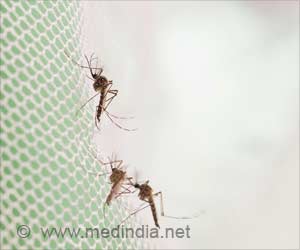In a delicate procedure, the tribal community extracts the silk thread from cocoons spun by the worms by boiling them to make them softer and collection easier.
Silkworms produce silk threads which are in high demand in India, Europe and the US for use in saris and other garments and home furnishings. India is the world's second largest producer of all types of silk, including tasar, a copper-colored silk coveted for its unique texture. The tribal communities in the dense forests of Bihar and neighboring Jharkhand states have long reared the silkworms to make tasar. But silk production has hiked in the recent years, thanks to the adoption of modern techniques, attracting new farmers and handing them a way out of poverty.
Local NGO Pradan has also helped train the farmers in several ways, including how to use microscopes to examine and discount diseased moths. Pradan's Shamshad Alam said, "We have (also) helped the farmers plant arjuna trees on the wastelands here. These trees serve as hosts to the moths."
This thriving industry in Bihar supplements the tribal communities' traditional rice farming in a region which lacks irrigation and is at the mercy of monsoon rains. In a delicate procedure, the tribal community extracts the silk thread from cocoons spun by the worms by boiling them to make them softer and collection easier. It normally takes between 250 and 700 cocoons to make one single sari.
Bhola Tudu, a silkworm rearer, said, "Profits have increased thanks largely to a regular supply of healthy eggs from a cooperative set up by community members in their village. We do the microscopic examination of the eggs ourselves. We discard the bad ones and then buy the good eggs at a nominal price which ensures optimum profits. The silkworms have really changed our lives."
40-year-old Munia Murmu lived in extreme poverty, and until recently could not afford enough food for her and her family. But, things soon changed for the better, when Murmu along with dozens of other women began to nurture the silkworms. She now sells silkworm eggs to other rearers, and during the breeding season, which lasts three months of the year, manages to earn 50,000 rupees ($770), a relative fortune.
Source-AFP











